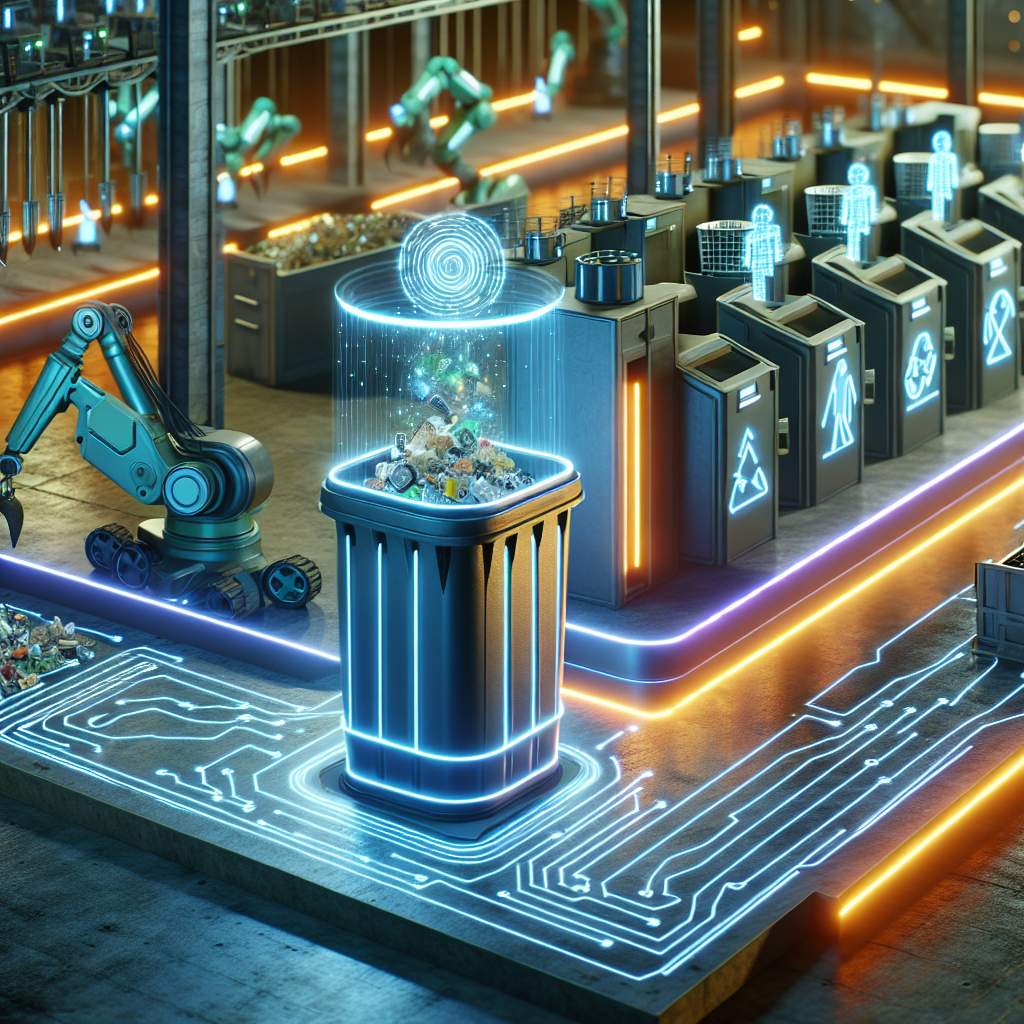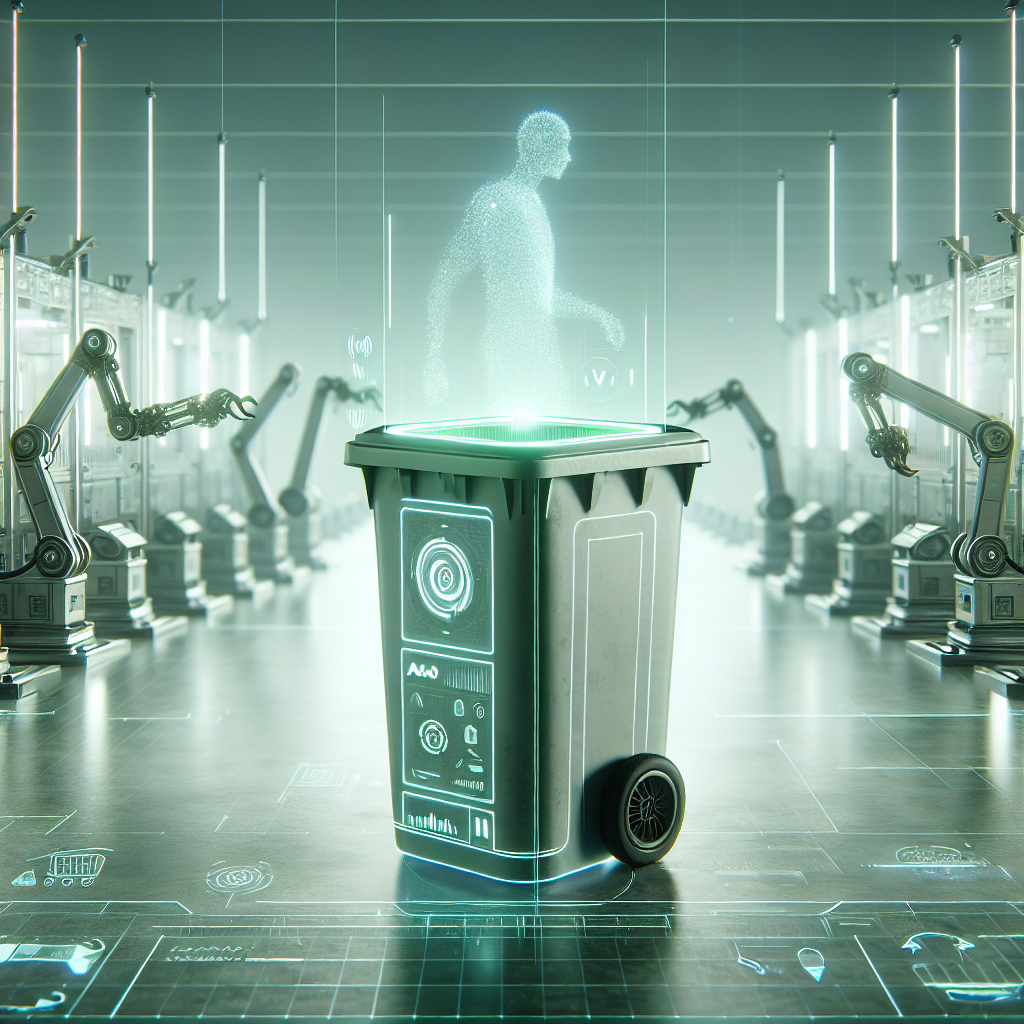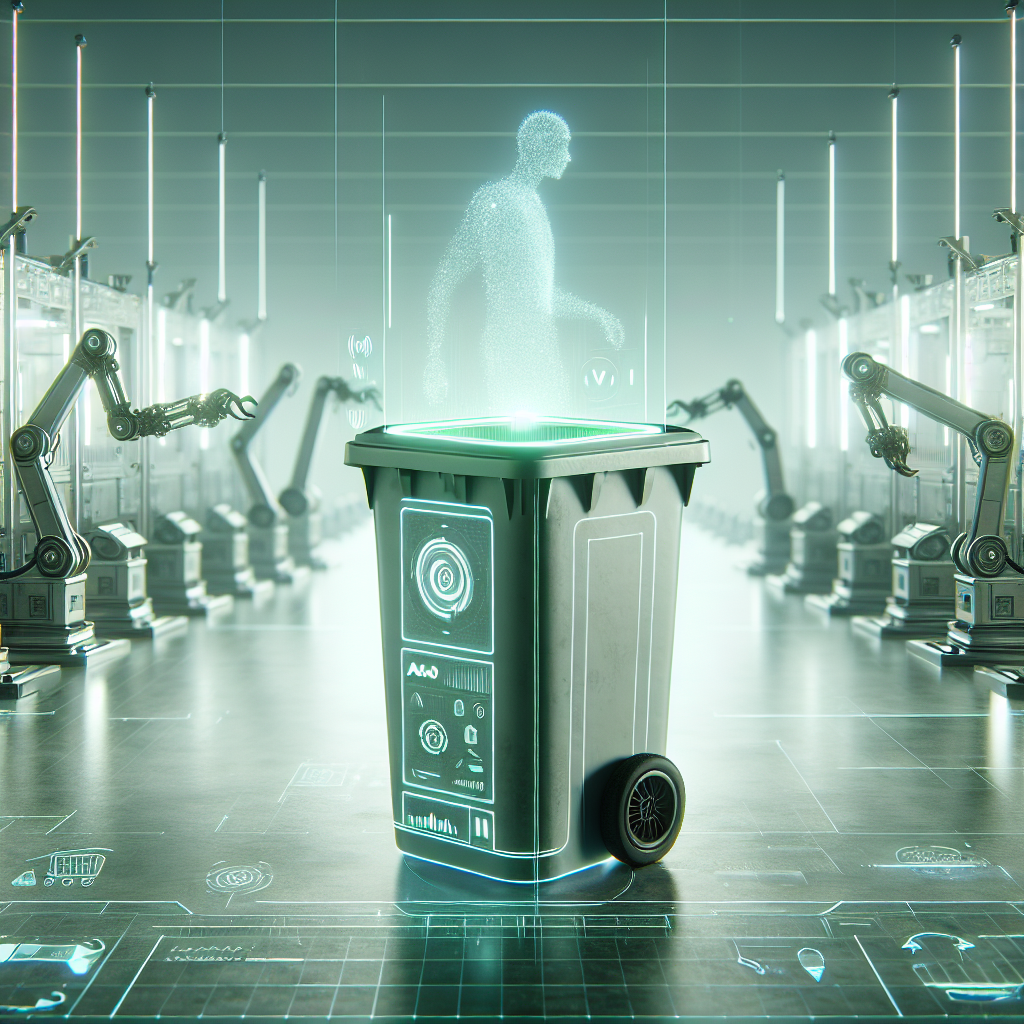Imagine a world where waste management is a seamless and efficient process, thanks to the power of technology. From streamlining recycling systems to implementing smart sensors for trash collection, technology is playing a pivotal role in revolutionizing waste management practices. In this article, we will explore the various ways in which technology is reshaping waste management, leading to a cleaner and more sustainable future for our planet. Let’s delve into the exciting possibilities and innovations that are paving the way for a greener tomorrow.
Waste Management Overview
Waste management is a crucial aspect of maintaining a clean and sustainable environment. It involves the collection, transportation, processing, and disposal of waste materials, with the goal of minimizing their negative impact on the ecosystem. However, waste management poses various challenges that need to be addressed effectively to ensure a healthier and cleaner future.
Challenges in waste management
The process of waste management faces numerous challenges, ranging from limited resources to increasing waste generation. Rapid urbanization and population growth have led to a dramatic increase in the amount of waste produced globally. This puts immense pressure on waste management systems and infrastructure, making it difficult to manage waste effectively.
Another challenge is the improper disposal of waste, particularly in developing countries. Inadequate waste collection and disposal practices lead to pollution of air, water, and soil, posing a threat to human health and the environment. Additionally, the rising costs associated with waste management present a financial burden for many communities and governments.

Importance of effective waste management
Effective waste management is vital for several reasons. Firstly, it helps protect public health and the environment by reducing the risk of diseases caused by improper waste handling. Proper waste management also minimizes pollution, preserving natural resources and ecosystems for future generations.
Furthermore, waste management plays a crucial role in the conservation of energy and the reduction of greenhouse gas emissions. Several waste management techniques can convert waste into energy, helping to alleviate the strain on non-renewable energy sources. Additionally, proper waste management promotes the recycling and reuse of materials, contributing to the preservation of valuable resources.
Types of Waste
Waste can be classified into various categories based on its characteristics and potential impact on humans and the environment. The four main types of waste are solid waste, liquid waste, hazardous waste, and e-waste.
Solid waste
Solid waste refers to any non-liquid material that is discarded and managed as waste. This includes household waste, commercial waste, and industrial waste, such as plastic, paper, glass, and food waste. Solid waste management involves collecting, sorting, recycling, and disposing of these materials appropriately.
Liquid waste
Liquid waste primarily consists of wastewater generated from domestic, commercial, and industrial activities. It contains various pollutants, including chemicals, oils, and sewage. Proper treatment and disposal of liquid waste are essential to prevent contamination of water bodies and potential health hazards.
Hazardous waste
Hazardous waste poses significant risks to human health and the environment due to its toxic, flammable, and corrosive nature. This type of waste includes chemicals, batteries, pesticides, and medical waste. Specialized management and disposal techniques, such as incineration and chemical recycling, are required to safely handle hazardous waste.
E-waste
E-waste refers to electronic waste, including obsolete electronics such as computers, smartphones, and televisions. The rapid advancement of technology has resulted in a substantial increase in e-waste generation. Due to the presence of hazardous materials, proper disposal and recycling of e-waste are critical to prevent environmental contamination.

Traditional Waste Management Methods
Before the emergence of technology in waste management, traditional methods were commonly used to handle waste. These methods include dumping in landfills, incineration, and composting.
Dumping in landfills
Dumping waste in landfills is one of the oldest and most common waste management methods. Waste materials are disposed of in designated areas, where they are compacted and covered with soil. However, this method has several drawbacks, such as the potential for groundwater contamination and the generation of greenhouse gases from decomposing waste.
Incineration
Incineration involves the combustion of waste materials, converting them into ash, gas, and heat. This method is often used for hazardous waste or waste that cannot be recycled. However, incineration produces air pollutants and may not be an environmentally friendly solution for all types of waste.
Composting
Composting is the process of decomposing organic waste materials, such as food scraps and yard waste, into nutrient-rich compost. This method is beneficial as it reduces the volume of waste sent to landfills and produces a valuable product for gardening and agriculture. However, composting requires proper management to control odors and ensure the composting process is efficient.
The Emergence of Technology in Waste Management
Technology has revolutionized various aspects of our lives, and waste management is no exception. The integration of technology in waste management has led to numerous benefits and advancements in the way waste is handled and processed.
Benefits of technology in waste management
The use of technology in waste management offers several advantages. It enables more efficient collection and disposal processes, reducing costs and improving sustainability. Technology also enhances waste tracking and monitoring, providing valuable data for analysis and decision-making. Furthermore, automated sorting systems and recycling technologies have improved the recycling rate and reduced landfill waste.
Advancements in waste management technology
In recent years, there have been significant advancements in waste management technology. One notable innovation is the development of smart waste bins.
Smart Waste Bins
Smart waste bins are equipped with various sensors, connectivity features, and data analytics capabilities. These bins are designed to streamline waste collection processes, optimize waste allocation, and improve overall waste management efficiency.
Features and functionalities
Smart waste bins are equipped with sensors that monitor the bin’s fill level in real-time and send notifications to waste collection teams when it needs to be emptied. Some bins are equipped with weight sensors to accurately measure the amount of waste generated. These bins can also be equipped with odor sensors to detect unpleasant odors, allowing for prompt action to be taken.
Furthermore, smart waste bins can be connected to a central management system, enabling remote monitoring, data analysis, and optimization of waste collection routes. Some bins can even compact the waste to maximize bin capacity, reducing the frequency of collection trips.
Benefits of using smart waste bins
Using smart waste bins offers several benefits. Firstly, it improves waste collection efficiency by optimizing collection routes and minimizing unnecessary trips. This, in turn, reduces fuel consumption and carbon emissions associated with waste collection vehicles.
Secondly, smart waste bins help to prevent overflow and littering by alerting waste collection teams when bins are reaching capacity. This ensures timely disposal and prevents the accumulation of waste in public areas.
Thirdly, smart waste bins provide valuable data on waste generation patterns, allowing for better waste management strategies and resource allocation. This data can be used to identify areas with high waste generation and implement targeted waste reduction initiatives.
Implementation challenges
While smart waste bins offer numerous advantages, their implementation can pose challenges. The initial cost of installing smart waste bins and the associated infrastructure can be a barrier for some communities and municipalities. Additionally, ensuring proper connectivity and maintenance of these bins can be challenging, especially in remote or densely populated areas.
However, with the continued advancements in technology and decreasing costs, the adoption of smart waste bins is becoming increasingly feasible and beneficial for waste management systems worldwide.
Waste Tracking and Monitoring Systems
Real-time waste monitoring and tracking systems play a crucial role in optimizing waste management processes. These systems utilize the Internet of Things (IoT) and data analytics to provide valuable insights into waste generation, collection, and disposal.
Real-time waste monitoring
Real-time waste monitoring systems utilize sensors and connectivity to track the fill level of waste bins in real-time. This enables waste collection teams to optimize their routes, ensuring efficient collection and minimizing unnecessary trips. Real-time monitoring also allows for prompt action to be taken when bins are nearing capacity, preventing overflow and reducing littering.
Internet of Things (IoT) in waste management
The Internet of Things (IoT) refers to the network of interconnected devices that can communicate and exchange data. In the context of waste management, IoT plays a vital role in connecting waste bins, waste management systems, and waste collection teams. This connectivity allows for seamless data transfer and analysis, enabling better decision-making and optimization of waste management processes.
Data analytics for improved waste management
Data analytics is a powerful tool that can be used to improve waste management practices. By analyzing the data collected from waste tracking and monitoring systems, insights can be gained into waste generation patterns, collection efficiency, and recycling rates. This information can be used to identify areas for improvement, optimize waste collection routes, and implement targeted waste reduction initiatives.
Waste Sorting and Recycling Technologies
Proper waste sorting and recycling are important steps in achieving sustainable waste management. Technology has played a significant role in advancing waste sorting and recycling techniques, leading to more efficient and effective recycling processes.
Automated sorting systems
Automated sorting systems use sensors, optical scanners, and robotic arms to sort and separate different types of waste. These systems can identify and separate recyclable materials, such as plastics, metals, and paper, from non-recyclable waste. Automated sorting systems increase recycling efficiency, reduce contamination, and save labor in recycling facilities.
Optical sorting techniques
Optical sorting techniques utilize cameras and sensors to identify and sort recyclable materials based on their color, shape, and composition. This technology is particularly useful for sorting plastic waste, as different types of plastics can be distinguished and sorted accurately. Optical sorting improves the purity of recycled materials and enhances the overall recycling process.
Chemical recycling
Chemical recycling involves converting waste materials into their basic chemical components, which can then be used to produce new products. This method is particularly effective for plastics that are difficult to recycle through traditional mechanical processes. Chemical recycling offers a means to recover valuable resources from waste and reduce the reliance on fossil fuels in the production of new materials.
Biological recycling
Biological recycling, also known as composting, utilizes natural processes to decompose organic waste materials. This process occurs in controlled environments with the help of microorganisms, turning organic waste into nutrient-rich compost. Composting is a sustainable method of waste management that reduces the volume of waste sent to landfills and produces a valuable product for agriculture and horticulture.
Waste-to-Energy Technologies
Waste-to-energy technologies aim to convert waste into usable energy sources, reducing reliance on non-renewable energy and minimizing waste disposal. There are several waste-to-energy technologies currently in use, including incineration with energy recovery, anaerobic digestion, and gasification.
Incineration with energy recovery
Incineration with energy recovery involves burning waste materials at high temperatures, converting them into heat and energy. This energy can be used to generate electricity, heat buildings, or power industrial processes. Incineration with energy recovery helps reduce the volume of waste sent to landfills while producing a valuable energy source.
Anaerobic digestion
Anaerobic digestion is a biological process that converts organic waste into biogas and fertilizer. Waste materials are broken down by microorganisms in the absence of oxygen, producing methane-rich biogas. This biogas can be used as a renewable energy source for heating, electricity generation, or as a vehicle fuel. Anaerobic digestion not only produces energy but also reduces methane emissions from decomposing organic waste.
Gasification
Gasification is a thermochemical process that converts carbonaceous materials into a synthetic gas, or syngas. Waste materials are heated at high temperatures in an oxygen-limited environment, producing combustible gases. Syngas can be used as a fuel for various applications, including electricity generation and industrial processes. Gasification helps reduce the volume of waste sent to landfills while producing a valuable source of energy.
Digital Platforms for Waste Management
Digital platforms and mobile applications have emerged as effective tools for streamlining waste management processes and enhancing communication between stakeholders.
Mobile applications for waste collection
Mobile applications allow waste collection teams to optimize routes, track pickup schedules, and receive real-time updates on waste bin status. These applications provide a user-friendly interface for waste management personnel, enabling them to efficiently manage waste collection and respond promptly to any issues or changes.
Online waste management platforms
Online waste management platforms allow individuals, businesses, and waste management companies to connect and collaborate. These platforms enable waste generators to request waste collection services, track their waste disposal, and access relevant waste management information. They also provide waste management companies with valuable data for planning and optimizing their operations.
The Future of Waste Management Technology
The future of waste management technology holds exciting possibilities for further advancements and integration with other sectors.
Artificial intelligence in waste management
Artificial intelligence (AI) can be utilized to improve waste characterization, sorting, and recycling processes. AI algorithms can analyze waste composition and identify recyclable materials with high accuracy, enabling more efficient recycling practices. Additionally, AI can help automate waste sorting systems, making them more adaptable and intelligent in their sorting capabilities.
Integration with smart cities
Waste management technology is expected to be increasingly integrated with the concept of smart cities. This integration involves connecting waste management systems, sensors, and data analytics platforms to create more sustainable and efficient waste management solutions. By leveraging technology and interconnected systems, smart cities can optimize waste collection routes, reduce waste generation, and promote recycling.
Circular economy concepts
The concept of a circular economy, where resources are kept in use for as long as possible and waste is minimized, will play a significant role in the future of waste management technology. Innovation in waste management will focus on developing technologies and strategies that enable the circular economy to become a reality. This includes implementing innovative recycling techniques, reducing the reliance on single-use products, and promoting the reuse of materials.
In conclusion, technology has undoubtedly revolutionized waste management, offering numerous benefits and advancements in the way waste is handled, sorted, and recycled. From smart waste bins to waste tracking and monitoring systems, technology has greatly improved efficiency, sustainability, and resource management in waste management practices. As we continue to explore new possibilities and integrate technology further, the future of waste management holds great promise in creating a cleaner and more sustainable world.

